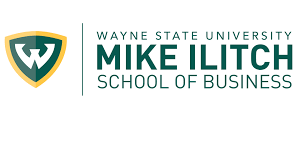Inbound Recruiting
Video Script
My name is Nirali Patel and today I'm going to talk about inbound recruiting. Finding qualified candidates especially challenging in a climate where unemployment is low and competition is substantial. It's not enough to post jobs and job roads and wait for candidates to apply. Today, demand for talented people is much higher than supply. And this is why war for talent has emerged.
On today's agenda, first, I'm going to be answering 'What is Inbound Recruiting' and how to do it right, learn more about inbound methodology, and lastly I'll discuss the importance of Inbound Recruiting. So, let's get started 'What is Inbound Recruiting'.
According to HubSpot, inbound recruiting creates a remarkable candidate experience through employer brand content and marketing strategies which helps companies build relationships with top talent. By taking an inbound marketing approach to recruit, companies can connect with passive and active job seekers engage with the network and delight candidates throughout the application process. So, to put it in simple words, inbound recruiting is a combination of employer branding and recruitment marketing. There are four stages of inbound recruiting. In the recruitment world instead of attracting engaging and delighting customers, the goal is to attract engage and delight your candidates. For example, to attract and source, companies need to stand out to get a chance to attract the best candidates. They need to create content that is easy to find, adds value, and communicates what it's like to work at your company through their employer branding. Have enough content available and digital marketing elements like an updated career site and / or being active in the social networks.
Before deciding to apply, candidates do a lot of research about the company because they want to know about the company's culture, employer reviews, benefits, learn more about compensation, work environment, and so on. Once you've attracted the right talent to your job offers, the next step is to effectively convert these visits into candidates. For that, you must convince them and make it easy to apply for your positions. Some of the tools to convert these visits into candidates are job offers via mobile phones such as Glassdoor and are quick and easy fill-in forms for example job applications with simple questions.
Next, is Engage. Once you have attracted the best talent and have converted them into candidates you need to close the selection process and convert the best ones into employees. To do so you need to use a talent relationship management tool and automatic email replies and / or candidate database. Lastly, you need to impress your candidates and employees during each of the parts of the selection process. So that they promote your business for you. If candidates have an excellent experience throughout the selection process even if you don't hire them they will become loyal promoters of your company and will recommend you to their contacts through their experience, referrals, and / or surveys.
Now let's talk about the importance of inbound recruiting. Email recruiting is a technique that creates a system for continuously receiving qualified candidates regardless of whether they are open positions or not at that time. In short inbound recruiting can help your company get the talented needs in tight markets. To start using inbound techniques to optimize your current recruiting strategy, you must have a clear brand promise. It's also important that you develop a very transparent and strong relationship with your current employees. As they are the ones who will build or break your employer branding.
Here are my references. Also, I would like to thank you guys for listening!
References:
- HubSpot. What is Inbound Recruiting? https://www.hubspot.com/inbound-recruiting
- TalentLyft. What is Inbound Recruiting? https://www.talentlyft.com/en/resources/what-is-inbound-recruiting
- The Inbound Recruiting Methodology https://talentclue.com/en/inbound-recruiting


 Nirali Patel
Nirali Patel